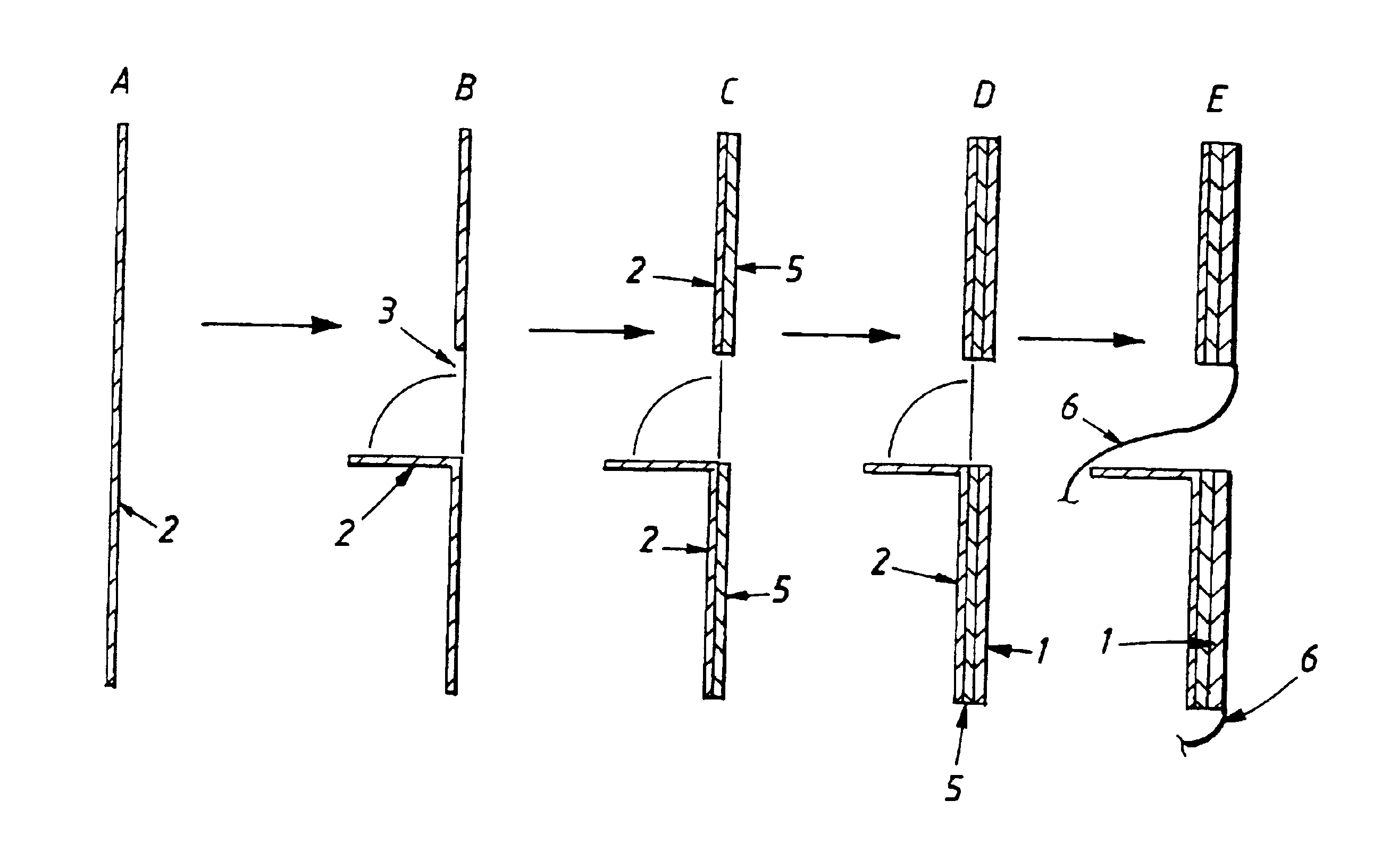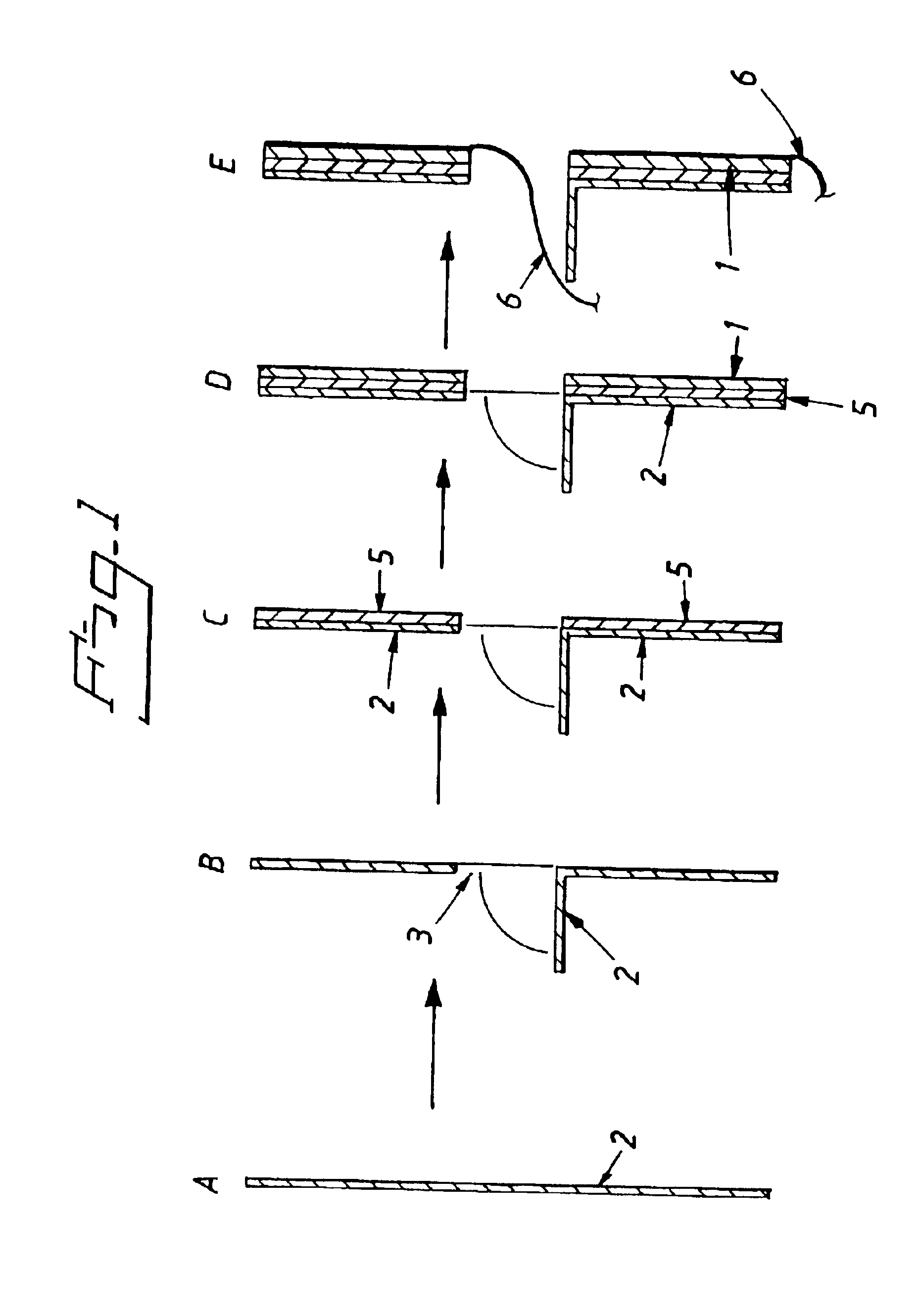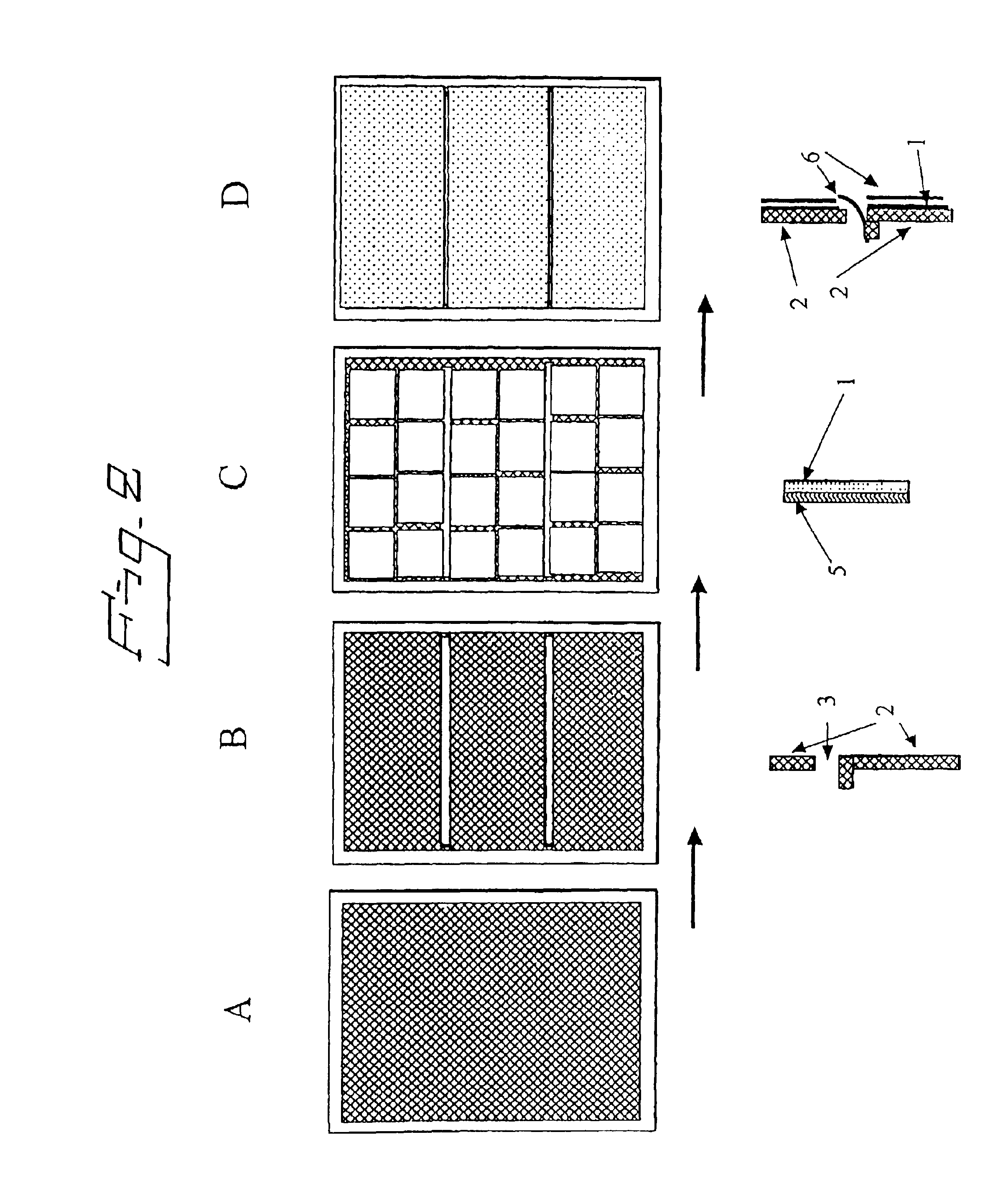Electrolytic cell
a technology of electrolysis cell and electrolysis process, which is applied in the direction of cells, electrolysis components, electrolysis processes, etc., can solve the problems of large conversion cost and large amount of energy consumed, and achieve the effect of complex manufacturing of resilient means
- Summary
- Abstract
- Description
- Claims
- Application Information
AI Technical Summary
Benefits of technology
Problems solved by technology
Method used
Image
Examples
example 1.1
The same retrofitting as in example 1 was performed but with one piece of carbon cloth instead of three pieces. Electrolysis was performed under the same conditions as in example 1, which resulted in an increase in cell voltage from the initial value of 2 V to 2.4 V after 100 hours. The cell was opened after 150 hours of electrolysis. Flooding of the lower portion of the cell was observed.
example 1.2
Similar retrofitting as in example 1 was performed but without a current distributor between the existing cathode and the gas diffusion electrode members. Electrolysis was performed under the same conditions as in example 1. The cell voltage was 2.2 V at a current density 30 A / dm.sup.2. Even though the current density was lowered to 5 A / dm.sup.2, the cell voltage was maintained at 2.2 V. No reduction of the cell voltage was observed after 1000 hours of operation. The cell was opened after 1000 hours of operation and partially dry portions on the surface of the gas diffusion electrode were found. This resulted from inhomogeneous contact between the gas diffusion electrode and the electrolyte layer.
example 2
A gas diffusion electrode was prepared by coating silver paste on a silver expanded mesh. PTFE was used as binder. Sintering was performed first at 150.degree. C. for 20 minutes and then at 250.degree. C. for 30 minutes. Silver powder having a particle size of 10 to 100 nm was mixed with 20 wt % of a Nafion.TM. solution and subsequently applied on the silver paste followed by further sintering at 140.degree. C. The obtained gas diffusion electrode members were attached as in example 1. The whole cell assembly used was the same as of example 1 except the gas diffusion electrode. Electrolysis was performed under the same conditions as of example 1 and a cell voltage around 2 V at a current density of 30 A / dm.sup.2 was obtained. The cell voltage was kept at around 2 V even after 2000 hours of operation.
PUM
| Property | Measurement | Unit |
|---|---|---|
| thick | aaaaa | aaaaa |
| distance | aaaaa | aaaaa |
| distance | aaaaa | aaaaa |
Abstract
Description
Claims
Application Information
 Login to View More
Login to View More - R&D
- Intellectual Property
- Life Sciences
- Materials
- Tech Scout
- Unparalleled Data Quality
- Higher Quality Content
- 60% Fewer Hallucinations
Browse by: Latest US Patents, China's latest patents, Technical Efficacy Thesaurus, Application Domain, Technology Topic, Popular Technical Reports.
© 2025 PatSnap. All rights reserved.Legal|Privacy policy|Modern Slavery Act Transparency Statement|Sitemap|About US| Contact US: help@patsnap.com



